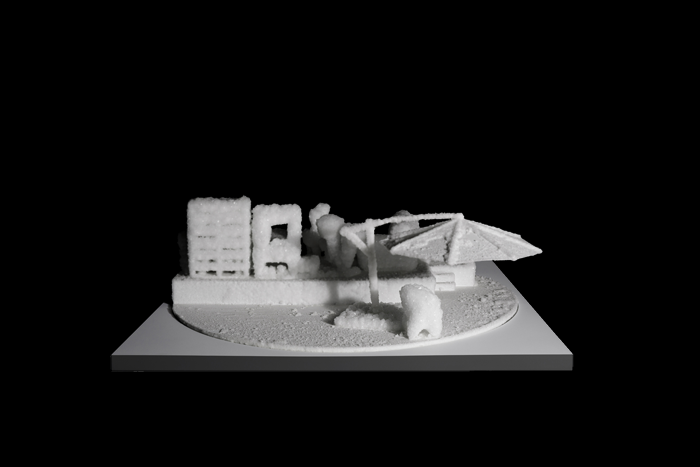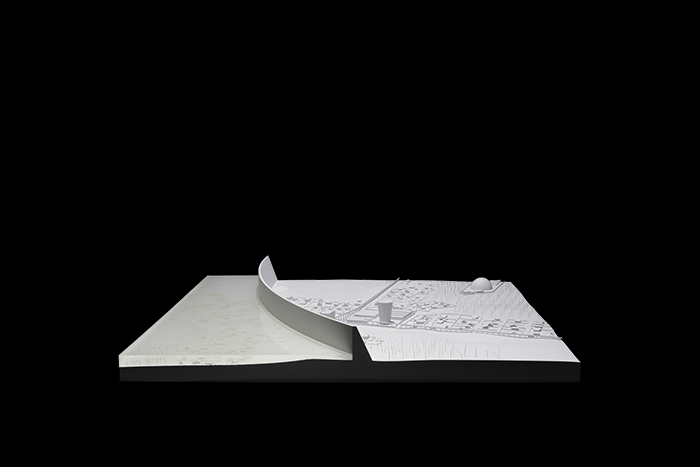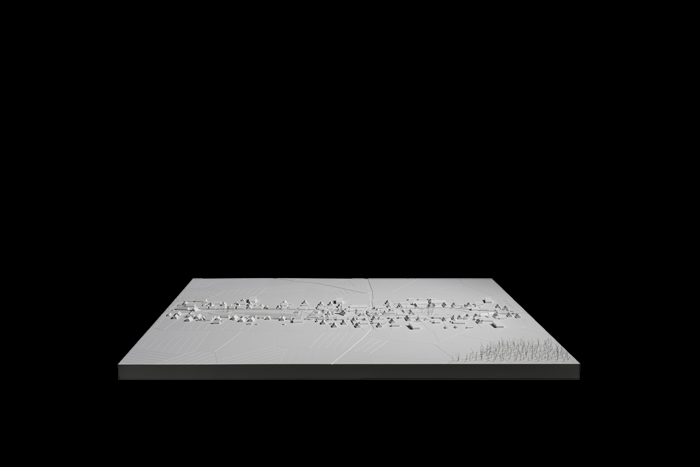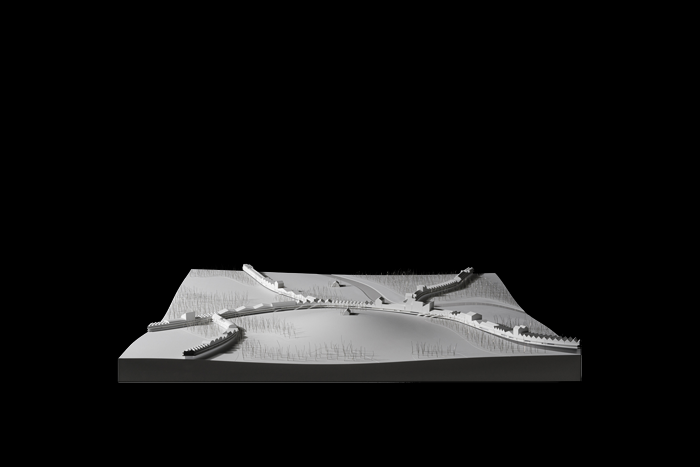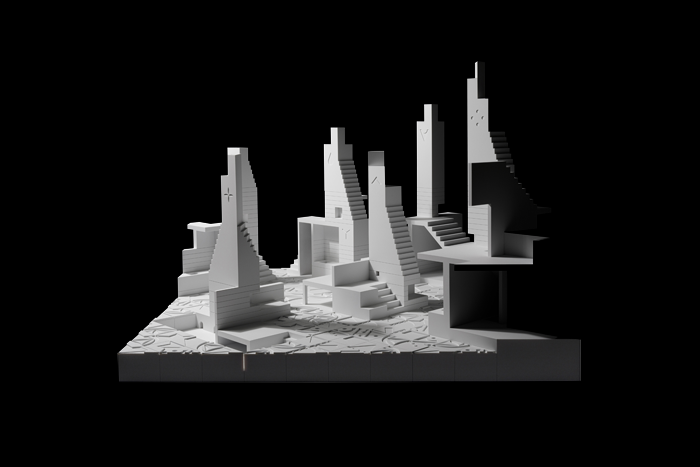Who has more of a right to shape a territory — humans with their activities, or the forces of nature? In the Sacred Species project, the existing relationship between humans and the surrounding nature is being radically changed. People are treated on an equal footing with other species of animals and plants, and the forest, as a common good, becomes an object of a kind of worship, care and attention. The model of the interior of a typical home, randomly overgrown with crystal, symbolises nature taking over the human-made environment.
Commentary by PROLOG +1
[…]
It was my grandmother who built our house, as I recall; she loved the sunshine, couldn’t live in the dark down there. We are five metres above the crowns, and it takes one hundred and twelve steps to climb every day — a good workout it is! Living up here seems dangerous, it definitely does, but the Woods protect us. After father died, it was just the two of us up here for a long time.
Then Paweł was one of the first ones who left when we started losing the roads at the valley. He moved somewhere around Kielce. Twelve hundred people live over there, I heard, and although they pray to the Trees, they don’t fear them as much as we do here in the South. They are also losing spaces of production and backyards as we have been, but they have built the village centre more concentrated and more vertically sophisticated to keep the forces outside the settlement at bay. Trees grow through houses or fall on roofs once in a while, but that’s fine, Paweł says — it’s inspiring how those people adapt to such new situations.
I sometimes feel our life is driven by this constant threat of losing spaces. The Trees take away our roads, our urban spaces, backyards, cemeteries, and crops. Exploitation, I heard the other day. There’s no stop here, the Sacred Forest of Silesia moves so aggressively. God help me, but it all seems to me like an uncontrolled chemical reaction that metabolises all formerly existing structures.
